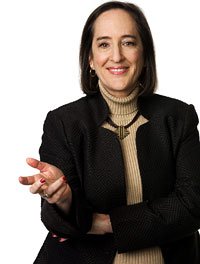Ask Ellen: Individualize Your Instruction
Use research and flexibility to reach every student in the classroom.
Dear Ellen,
I am a fifth-grade teacher, and my students perform at a wide variety of levels and abilities. I find myself teaching to the middle and having a difficult time engaging the lower- and higher-level students. What are some tools that will help me differentiate instruction so that the entire class is learning and performing at its highest ability?
Linda

Dear Linda,
One of the most demanding aspects of working in today's classrooms is accommodating the myriad academic and language levels of students as they enter school. Nevertheless, finding ways to engage students and ensure academic success for every one is one of the most critical aspects of teaching.
In order to involve all students in meaningful learning, a variety of teaching strategies and methodologies must be used. But more than a strategy, differentiation is a philosophy. The commitment to adapt instruction to individual needs comes from a belief that students learn better with the use of many styles and methods.
The first step is to know your students. This means knowing their academic and language levels, their interests, abilities, and learning styles, and, ideally, even some aspects of their home lives and learning experiences.
This information can be found through a variety of assessment tools -- both teacher developed and commercial -- and by reviewing records, surveying students, and working with families and former teachers. You also can conduct interest surveys to identify students' likes and dislikes, such as who enjoys reading (and what they read) and what else they do in their spare time.
When you have evaluated each student, there are four primary ways to adapt or differentiate student learning: through the curriculum content (what we teach), the learning process (how we teach), the end product (how students show what they have learned), and the environment (the physical space they learn in).
Differentiating the content means assigning topics based on interest or ability level. For example, students might write reports on a topic of interest to them. For a unit on American colonial history, one group might study famous people, while another group examines historical documents, and another investigates important places or events.
Differentiating the process means scaffolding the depth and complexity of a lesson. Doing so allows students to understand and apply knowledge in ways that make sense to them. Some students may do better discussing or debating a book -- using and/or developing their oral skills -- while others may learn more easily from a visual presentation using posters or Microsoft PowerPoint. Others may need to manipulate objects or piece things together.
It's important to remember that this approach can be applied to all students at any grade level. In fact, many educators believe that most students learn best using some combination of these strategies.
Varying the ways students show what they've learned is also important. By offering students options for how they present information and how the work is evaluated, you give all your students a chance to shine. Oral and written tests are not the only means for assessing student learning. You might use portfolios, rubrics, journals, reports, essays, projects, and other assignments and grading systems. The key is making sure that each student demonstrates understanding in the ways he or she does best.
Finally, the classroom environment plays an important role. How you arrange your classroom -- whether the desks are in rows or groups or learning centers -- sets the tone for both teaching and learning.
It is up to you to determine how best your students can learn. Developing appropriate activities to differentiate instruction in the classroom will help give you the tools you need to accomplish this goal.
Best of luck,
Ellen Moir is a veteran bilingual teacher who is focused on the challenges faced by new teachers as well as on the needs of those with long careers in education. She is also the executive director of the New Teacher Center, at the University of California at Santa Cruz, a resource for educator-induction research, policy, and practice.
Bewitched? Bothered? Bewildered? Ellen Moir is here to help. Write her at askellen@edutopia.org, and please include your name, affiliation, and contact information.